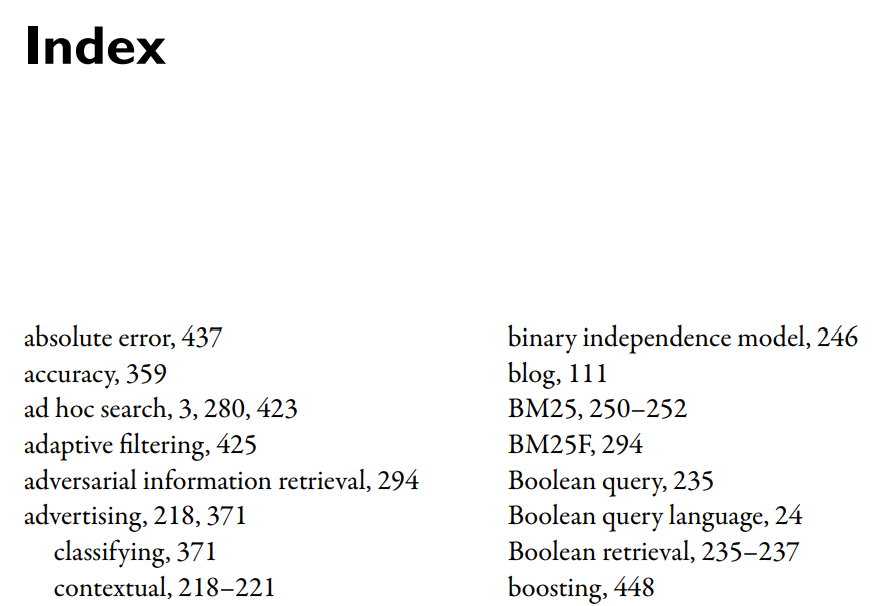Inverted Indexes
All modern search engine indexes are based on inverted indexes. Other index structures have been used in the past, most notably signature files, but inverted indexes are considered the most efficient and flexible index structure.

Example: The book index is arranged in alphabetical order by index term. Each index term is followed by a list of page numbers about that word.
Why do we call it inverted index?
Ans: The index is inverted because usually we think of words being a part of documents, but if we invert this idea, documents are associated with words.
Inverted List
Each index term has its own inverted list that holds the relevant data for that term.
In an index for a book, the relevant data is a list of page numbers.
In a search engine, the data might be a list of documents or a list of word occurrences.
Posting and Pointer
Each list entry is called a posting, and if the part of the posting that refers to a specific document or location is often called a pointer.
Each document in the collections is given a unique number to make it efficient for storing document pointers in the inverted list.
Advantages
Alternatives to inverted files generally have one or more disadvantages.
The signature file represents each document in the collection as a small set of bits. To search a signature file, the query is converted to a signature and the bit patterns are compared. In general, all signatures must be scanned for every search. Even if the index is encoded compactly, this is a lot of processing.
Also, matches in signature files are noisy, so a signature match is not guaranteed to be a match in the document text. Most importantly, it is difficult to generalize signature file techniques for ranked search.
The inverted file’s advantage is that only a small fraction of the index needs to be considered to process most queries.